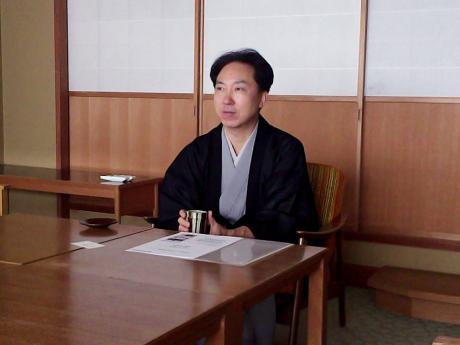Sado - an integral part of Japanese culture
Let us take you on a journey to Japan, and give you some insight into the culture there. Japan has a lot of traditional cultures and we would like to introduce to you one of them, “sado” or the tea ceremony, which is, in essence, is to make people welcome with tea.
What are the origins of Sado and why has it become so popular in Japan.
Sohen Yamada, who has inherited “sado” from his family has been preserving this tradition. He teaches that ceremony and organises tea parties in Kamakura, a seaside city just south of Tokyo.
Kamakura is famous for its monuments like Hase Temple, Kamakura Shrine and is one of the most popular places frequented by foreign tourists, who want to get a taste of nature and sea.
Yamada, explaining the significance of Sado said: “With such a long history, it is easier for people to understand the Japanese culture and to get to know about Japan.
“It (Sado) originally started with the idea of looking at artworks, evolved gradually, and then became the ceremony with tea and small sweets,” he said.
“So we naturally think about the best way to treat the guest,” Yamada continued. “We take care in selecting the location, what to wear and also how we should behave. In that sense “sado” is a kind of communication or a social technique and an important part of Japanese lifestyle.”
The ambience of the Sado tea ceremony is set with a hanging scroll in a Japanese room, enclosed by “shoji”, which is a light screen consisting of a framework of wood covered with paper or other translucent material, and used originally in Japanese homes as one of a series of sliding panels between the interior and exterior or between two interior spaces. The shoji reflects the four seasons of Japan.
Japanese use “shoji”, instead of curtains as the natural light comes in the room in abundance — it is an outdoor-indoor feeling, people can enjoy the outside while sitting in the comfort of the warm interiors.
The people sit in “seiza”, which is the Japanese way of formal sitting, folding one’s legs under oneself and sit with back upright.
There is also special flower arrangements that are done and so is calligraphy, which is part of the décor of the tea room.
Shoji also has a deeper meaning, as Japan is prone to a lot of natural disasters — earthquakes, typhoons and tsunamis — it reflects the delicate nature of life and space that people live in.
Yamada’s Tea Ceremony Hall in Kamakura is popular among foreign tourists, and they often come to that hall to experience and to be a part of the tea ceremony.
He organises tea ceremonies for tourists, which are also a way to learn about the Japanese culture.
“I also had the experience of learning the tea ceremony when I was in elementary school,” Yamada said. “I realised that it was only when sitting on a “tatami” (these are mats used in traditional Japanese flooring, the top surface is made of woven straw. Traditional tatami are packed with straw) and making tea in a quiet room, I was able to calm myself down appreciate the nature around me.”
The tea ceremony is not merely drinking a hot beverage but a means of socialisation and critically keeping an age old tradition alive in the modern world.
Experience tea ceremonies first-hand in Japan, a way to calm your souls, spirits, connect with nature and also live a Japanese tradition.
- JIRO International Press Center



